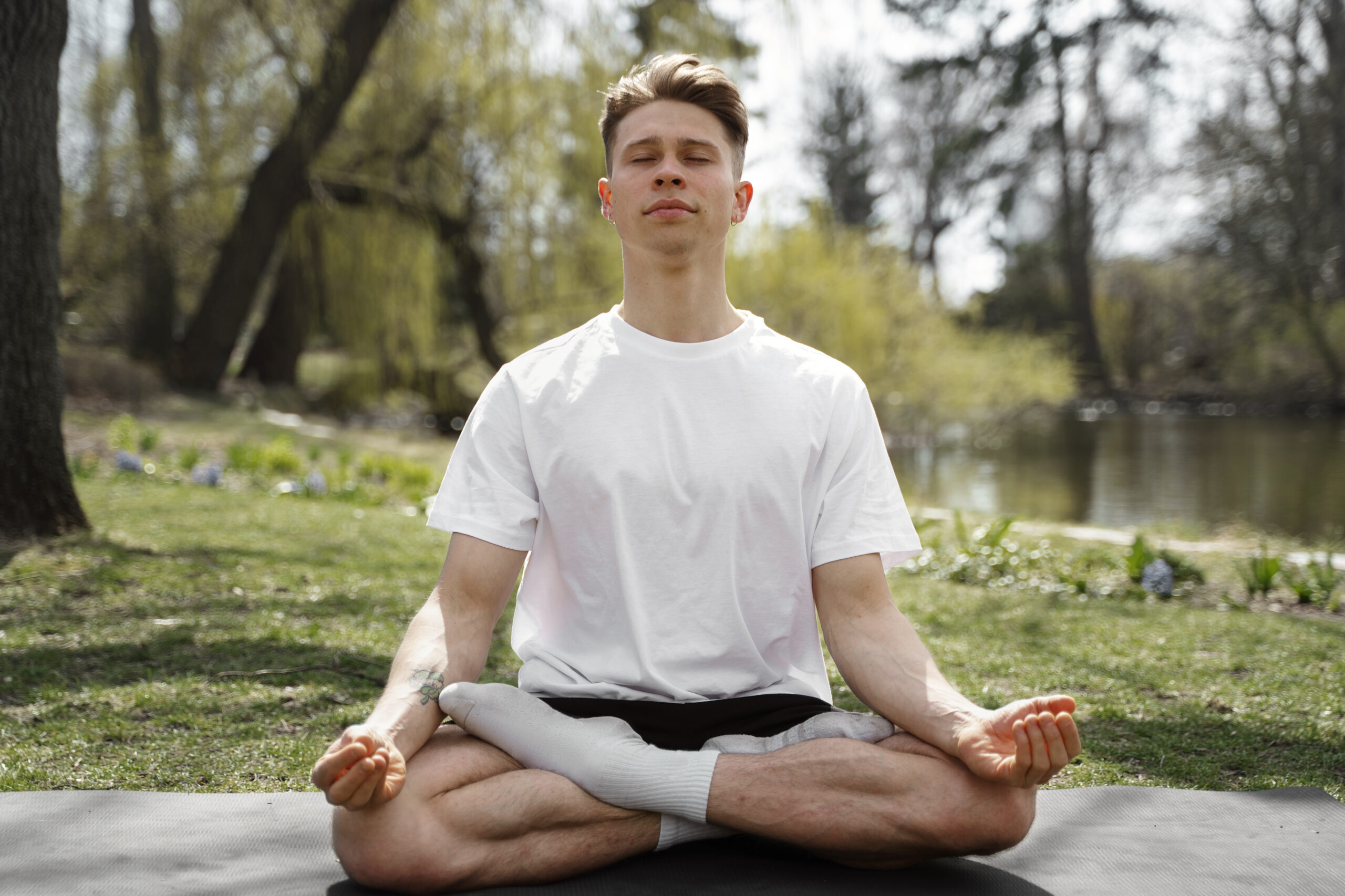
Take a moment right now to notice your breath. Don’t change it yet, simply observe. Is it shallow or deep? Fast or slow? Restricted or flowing freely? What you’re experiencing in this moment is a direct reflection of your current emotional and energetic state, because your breath is far more than just a biological function, it’s a bridge between your conscious and unconscious mind, your body and spirit, your past and present moment.
In virtually every spiritual and healing tradition across the globe, breath has been recognized as a profound medicine. The ancient yogis called it “pranayama”, the extension of life force. Indigenous cultures have long used breathwork as a pathway to healing and expanded states of consciousness. Modern science now confirms what these traditions have always known: conscious breathing is one of the most accessible and powerful tools we have for healing emotional wounds, releasing trapped energy, and restoring our natural state of balance.
The Breath-Emotion Connection
Your breathing pattern tells the story of your emotional life. When you’re anxious, your breath becomes shallow and rapid. When you’re sad, it might feel heavy and restricted. When you’re angry, it becomes forceful and erratic. When you’re in love or experiencing joy, it flows naturally and deeply. This isn’t coincidental, it’s the intelligent design of your nervous system, where breath serves as both a barometer and a regulator of your emotional state.
But here’s what’s truly remarkable: this relationship works in both directions. Just as your emotions affect your breathing, you can use conscious breathing to shift your emotional state. This bidirectional relationship makes breathwork one of the most immediate and effective tools for emotional regulation and healing available to you.
Where Emotions Get Trapped
When you experience overwhelming emotions, whether from trauma, loss, stress, or even unexpressed joy, your body often responds by restricting the breath as a protective mechanism. Over time, these restricted breathing patterns can become habitual, creating physical tension and energetic blockages that keep old emotions locked in your system.
These emotional blocks don’t just disappear on their own. They’re stored in your tissues, your nervous system, and your energy field, continuing to influence your thoughts, behaviors, and overall sense of well-being. You might find yourself reacting to present situations with intensity that seems disproportionate, or feeling emotionally “stuck” in patterns that you can’t quite understand or shift through willpower alone.
The beautiful truth is that breath can be the key that unlocks these stored emotions, allowing them to move through your system naturally and restore your energetic flow.
The Science of Conscious Breathing
Modern research has revealed the profound physiological effects of conscious breathing. When you breathe slowly and deeply, you activate your parasympathetic nervous system, your body’s rest-and-digest response, which promotes healing, reduces stress hormones, and creates the optimal conditions for emotional processing and release.
Conscious breathing also increases oxygen flow to the brain, particularly to areas associated with emotional regulation and higher-level thinking. It releases endorphins and other feel-good neurotransmitters, reduces inflammation, and helps regulate the production of stress hormones like cortisol and adrenaline.
Perhaps most importantly, conscious breathing helps you develop what researchers call “interoceptive awareness”, your ability to tune into and understand your internal bodily sensations. This awareness is crucial for emotional healing because it allows you to feel and process emotions as they arise rather than numbing, suppressing, or being overwhelmed by them.
Different Breathing Techniques for Different Needs
Not all breathwork is the same, and different techniques can be used to address specific emotional blocks or needs:
Box Breathing (4-4-4-4): This technique involves inhaling for 4 counts, holding for 4, exhaling for 4, and holding empty for 4. It’s excellent for anxiety and helps create a sense of stability and groundedness when emotions feel chaotic.
Extended Exhale: Making your exhale longer than your inhale (such as breathing in for 4 counts and out for 8) activates the parasympathetic nervous system and is particularly effective for releasing stress, anger, or frustration.
Connected Breathing: This involves breathing in a circular pattern without pauses between the inhale and exhale. It’s powerful for accessing and releasing deeper emotional blocks and can facilitate profound healing experiences.
Heart-Centered Breathing: Focusing your attention on your heart while breathing slowly and deeply helps access emotions of love, gratitude, and compassion, which are incredibly healing for emotional wounds.
The Journey Through Emotional Release
When you begin working with conscious breathing to release emotional blocks, the journey might unfold in various ways. Some people experience immediate shifts, suddenly feeling lighter, clearer, or more peaceful after just one session. Others notice gradual changes over time as layers of stored emotion are gently released and integrated.
During breathwork sessions, you might experience physical sensations like tingling, warmth, or energy moving through your body. You might feel emotions more intensely than usual as they surface to be released, this is often a sign that the healing process is working. Sometimes memories or insights arise that help you understand the origin of certain emotional patterns.
It’s important to remember that feeling emotions during breathwork isn’t something to avoid, it’s often the pathway to freedom. When you can breathe through difficult emotions rather than holding your breath against them, you allow them to move through your system naturally instead of getting stuck.
Creating Safety for Deep Release
One of the most important aspects of using breathwork for emotional healing is creating a sense of safety in your nervous system. This might mean working with a qualified breathwork practitioner who can guide you through the process, especially when you’re first beginning to explore deeper emotional work.
A skilled practitioner can help you navigate intense emotions or sensations that might arise, provide tools for integration, and ensure that you’re breathing in a way that supports healing rather than retraumatization. They can also help you recognize when to push gently through resistance and when to slow down and honor your body’s natural pace.
Integration: The Key to Lasting Change
The healing that occurs during conscious breathing sessions is just the beginning. The integration process, how you incorporate the insights, releases, and shifts into your daily life, is what creates lasting transformation. This might involve making different choices based on new emotional clarity, setting boundaries that honor your newly released authentic self, or simply maintaining a regular breathing practice to support ongoing emotional balance.
Many people find that after clearing emotional blocks through breathwork, they have more energy for creativity, relationships, and pursuing their authentic path. Colors might seem more vivid, food might taste better, and they might feel more connected to their intuition and natural joy.
Breath as Daily Medicine
While intensive breathwork sessions can create profound shifts, the real magic often happens when you incorporate conscious breathing into your daily routine. Even just a few minutes of intentional breathing each morning or evening can help you stay connected to your emotional state, process stress before it accumulates, and maintain the energetic flow that supports your overall well-being.
You might use breath as a way to transition between activities, to center yourself before important conversations, or to reconnect with your body when you notice you’ve been lost in mental chatter. The more you work with your breath consciously, the more sensitive you become to its messages and the more skilled you become at using it as a tool for self-regulation and healing.
Your Breath, Your Medicine
Your breath has been with you since the moment you were born, and it will be with you until your last moment on this earth. It’s perhaps the most intimate and constant relationship you have, yet it’s one that many of us take completely for granted. When you begin to honor your breath as the medicine it truly is, you reclaim one of your most fundamental sources of healing, wisdom, and connection to your authentic self.
The emotional blocks that have been limiting your joy, creativity, and full expression of who you are don’t have to remain stuck forever. Through the simple yet profound practice of conscious breathing, you can begin to unlock these patterns and return to the natural flow of emotional energy that is your birthright.
Your breath is always available to you, always ready to support your healing, always willing to guide you back home to yourself. All you need to do is pay attention, breathe consciously, and trust in your body’s infinite wisdom to heal and restore itself.
Ready to experience the profound healing potential of conscious breathwork? A guided breathwork session can provide the safe container and expert support you need to release emotional blocks and reset your nervous system. Schedule your one-on-one breathwork session and discover how your breath can become your most powerful medicine for transformation and healing.
